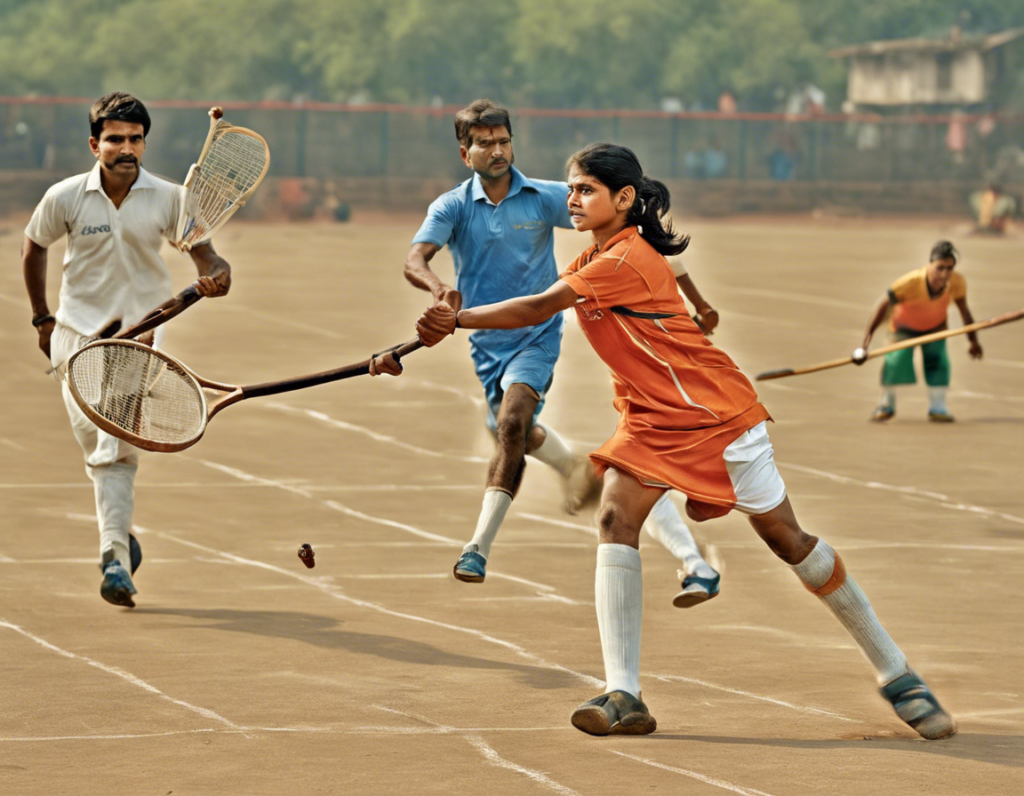Introduction
Kabaddi: This ancient and traditional sport originating from India has gained significant popularity not just in its home country but also across the globe. Known as India’s national sport, Kabaddi has a rich history and cultural significance that has captivated the hearts of millions of fans worldwide.
History of Kabaddi
Kabaddi is believed to have originated in ancient India and dates back thousands of years. The exact origins of the sport are uncertain, with some historical accounts suggesting that it was played as a form of self-defense or to build strength and stamina among soldiers. Over time, Kabaddi evolved into a popular pastime played in villages and rural areas across the Indian subcontinent.
In its traditional form, Kabaddi was played on open fields with boundaries marked out. The game involves two teams, each taking turns to send a “raider” into the opponent’s half to tag as many defenders as possible and return safely to their side. The defenders, on the other hand, try to stop the raider by tackling them before they can cross back over the center line.
The Modern Kabaddi Revolution
In recent years, Kabaddi has undergone a significant transformation, thanks in large part to the influence of organized leagues and tournaments. The Pro Kabaddi League, launched in India in 2014, was a game-changer for the sport, bringing unprecedented professionalism, popularity, and commercial success. The league attracted top players from around the world, and its success inspired the creation of similar leagues in other countries.
Rules and Gameplay
The rules of Kabaddi are relatively simple, making it easy for beginners to understand and enjoy the game. Some key rules include:
-
Team Composition: Each team typically consists of seven players on the court, with substitutes available on the sidelines.
-
Raids: A raid is a player’s attempt to tag opponents while chanting “Kabaddi, Kabaddi” without taking a breath. The raider must return to their half of the court before being tackled.
-
Defending: Defenders must work together to stop the raider and prevent them from returning to their half. Tackling the raider to the ground is a common defensive move.
-
Points: Teams earn points for each defender tagged by the raider. Defenders earn points for successfully stopping a raider.
Health Benefits of Kabaddi
Participating in Kabaddi offers a wide range of health benefits, both physical and mental. Some notable benefits of playing Kabaddi regularly include:
-
Improved Cardiovascular Health: The fast-paced nature of Kabaddi helps improve cardiovascular fitness, endurance, and overall heart health.
-
Enhanced Strength and Agility: The constant movement, sprinting, and tackling in Kabaddi help build muscle strength, agility, and speed.
-
Stress Relief and Mental Well-being: Engaging in physical activity like Kabaddi can help reduce stress, anxiety, and improve mental well-being through the release of endorphins.
-
Team Building and Camaraderie: Playing Kabaddi fosters teamwork, communication, and camaraderie among teammates, leading to stronger social bonds and relationships.
Frequently Asked Questions (FAQs)
-
Is Kabaddi only played in India?
Answer: While Kabaddi is most popular in India, it is also played in other countries such as Iran, Pakistan, Bangladesh, and Japan. -
What are the different formats of Kabaddi?
Answer: There are various formats of Kabaddi, including Standard Style, Circle Style, and Beach Kabaddi. -
Is Kabaddi a contact sport?
Answer: Yes, Kabaddi is a contact sport that involves physical contact between players during raids and tackles. -
Are there professional leagues for Kabaddi?
Answer: Yes, the Pro Kabaddi League in India is a professional league that has garnered international attention and features top players from around the world. -
Can women participate in Kabaddi?
Answer: Yes, there are separate leagues and tournaments for women’s Kabaddi, and women actively participate in the sport at all levels. -
What equipment is required to play Kabaddi?
Answer: Players typically require comfortable sportswear and shoes suitable for running and tackling on indoor or outdoor surfaces. -
How can one learn to play Kabaddi?
Answer: Interested individuals can join local sports clubs, academies, or training centers that offer Kabaddi coaching and practice sessions. -
What are the basic skills needed for Kabaddi?
Answer: Key skills for Kabaddi include speed, agility, strength, coordination, teamwork, and quick decision-making on the court. -
Is Kabaddi included in international sporting events like the Olympics?
Answer: While Kabaddi is not yet an Olympic sport, it is a regular feature in events like the Asian Games and South Asian Games. -
What are some common strategies used in Kabaddi?
Answer: Teams employ various strategies such as raid rotations, defensive formations, coordinated tackles, and time management to outwit their opponents and secure victory.
Conclusion
In conclusion, Kabaddi continues to be a beloved sport that embodies the spirit of teamwork, skill, and tradition. With its growing popularity and global reach, Kabaddi is poised to make an even greater impact on the world stage. Whether played competitively in professional leagues or enjoyed recreationally, Kabaddi remains a dynamic and exhilarating sport that brings people together in the spirit of sportsmanship and camaraderie.
